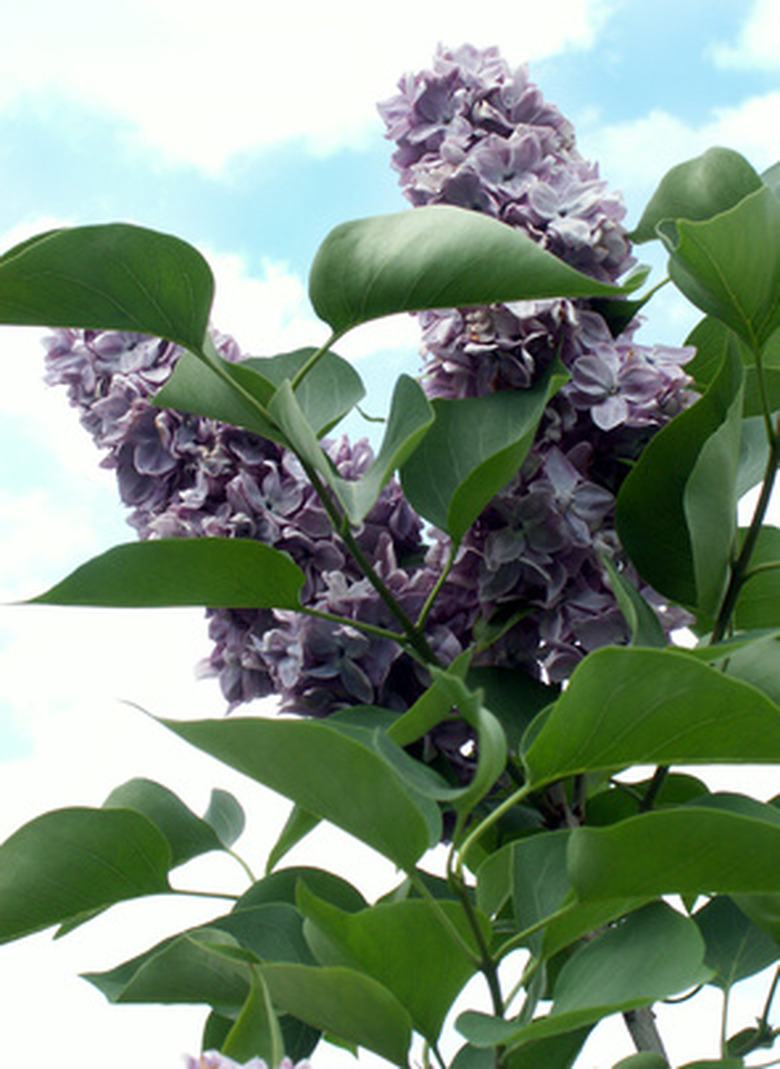Flowers That Look Like Lilacs
Lilacs have over 2000 named cultivars, according to the International Lilac Society. Lilacs are classified as to whether they have single or double blooms. In addition to the common purple flowers, lilac bushes can also bear pink or white flowers. They bloom from May to June and are heavenly scented. Ideally lilacs do best in hardiness zones 3 through 5 and in cooler areas of zones 6 and 7, according to John L. Fiala, author of "Lilacs: The Genus Syringa." If you live in an area in which lilacs won't grow, choose flowers that resemble lilacs instead.
Buddleia
Buddleia is a flowering shrub that can grow up to 12 feet tall in mild climates. Buddleia is also referred to as a summer lilac or a butterfly bush, the latter due to its unique ability to attract butterflies. The flowers bloom at the ends of long arching branches in cone-shaped clusters. Colors include purple, deep pink, white and orange. Buddleia prefers a sunny location and a warm climate, and will bloom all summer. Shrubs take easily to pruning to keep them in bounds.
Oak Leaf and Panicle Hydrangea
Mop and lace cap hydrangea blooms are arranged in balls comprised of many small blooms in white, pink, blue or light green. The oak leaf and panicle hydrangeas have flowers arranged in cone shapes rather than balls. The bush doesn't look like a lilac vine, but the flowers do resemble lilacs. Hydrangeas need a partially shady location in hot summer climates. They prefer loamy, well-drained, acidic soil and bloom during the summer.
Hyacinth
Hyacinths are spring bulbs that have many flowers clustered on the stem. The flowers are thicker at the bottom and narrower toward the top of the stem, giving them a cone shape. While they don't smell like lilacs, hyacinths are very fragrant. Plant in fall before the first frost for spring bloom. They require a chilling period of 16 weeks to bloom. Hyacinths come in white, purple and pinks.
Wisteria
From a distance, wisterias and lilacs look somewhat alike. Both are woody shrubs with clusters of flowers hanging from the branches. In addition, both plants have a strong perfumed fragrance. Wisterias twine from both right to left and left to right, but not on the same plant. They bloom in mauve, rose, blue and white. Unlike lilacs, which bloom for only a few weeks in spring, wisteria blooms once in late spring-early summer and again in late summer-early fall. Wisteria doesn't like its roots restricted, so plant in well-worked soil. Trim after blooming to keep the plant tidy.
References
- "The Country Garden"; Charlie Ryrie; 2003
- "Lilacs: The Genus Syrina"; John L. Fiala; 2002
